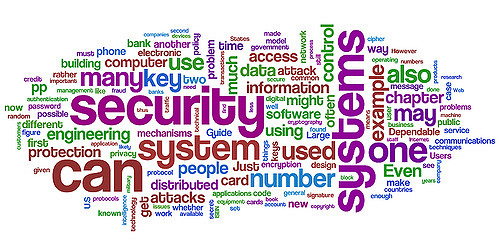Tricks to Ruggedizing the Digital Transformation Initiatives Against Cyber Security Threats

May 2017, National Health Service (NHS), UK is at the center of a major cyber attack where its medical services are completely disrupted. Ransomware, a malicious virus has hacked the IT systems and impacted the functioning of the major health systems in the United Kingdom. Similar attacks were made across 99 countries, including leading organizations in Spain, Portugal and the USA. The unprecedented and massive attacks soon became a major global incident and taught valuable lessons about the perils of weak security end points. The event also has some relevance for the organizations which have embarked on digital transformation initiatives.
Cybercrimes are booming and evidently there is a prolific growth in the intensifying barrage of intrusive threats. Certainly, the digital transformation initiatives are more vulnerable to such external threats. That's why, even after spending millions of dollars on digital IT solutions, businesses are facing spoiled customer relationships, diminished brand value and law suits. Fortunately, there are ways to maintain a balance between flexible creativity and enhanced information security.

Frightful Numbers
Identity Theft Resource Centre (ITRC) has some good numbers regarding data breaches. The resource center defines a breach as an event or incident where an entity’s name and social security number, license number, medical history or financial document is exposed to risk. It evaluated that since 2005, there were over 6,467 incidents of breach. Over 879,889,874 records were exposed to risk.
The U.S. Department of Defense claims that intellectual property more than Congress’ library is stolen from different government agencies. In 2011 alone, Dutch banks reported a yearly damage of 92.1 million Euros in online banking.
IBM’s Cost of Data Breach Study, confirms that on an average $ 4 million is the average cost of data loss. The research concluded that security systems can significantly reduce the average data breach per record cost by $16. Hence, dedicated efforts must be made to safeguard digital technologies.

Regulations and Penal Provisions
The legal aftermath of data breaches can be sufficient to sidetrack the core business from operating. Although the regulations might differ, but there is hardly any country that doesn’t take data theft seriously. In the US there are various federal and state laws that under which an organization can be penalized for the data breaches:
- Gramm-Leach-Bliley Act: Mandates financial institutions to disclose their information-sharing practices to their customers.
- Health Insurance Portability and Accountability Act (HIPPA), 1996: Provisions safeguarding the patient’s confidential data.
Apart from the above federal laws, various states have enacted their own laws on information security: Florida, District of Columbia, Virgin Island, etc.
Florida Information Protection Act of 2014 is known to be the most stringent of them all. The act expanded the definition of “protected data” and elaborates severest penalties in case of data breaches. Florida’s previous statue, FL. State. § 817.5681 was replaced with § 501.171 for making it applicable to businesses and entities outside the state.
In India, there are several provisions under Indian Penal Code, 1836; IT Act, 2000; Indian Contract Act, 1872; and Personal Data Protection Bill, 2006 where a company can be made liable for accidental or incidental leaks. Similarly UK has Data Protection Act (DPA) for safeguarding the personal data of individuals. The European Union has EU Data Protection Directive, 1995 which primarily holds the data processors responsible for data protection.

Ways to Secure the Digital Transformation Initiatives
Digitization has become notoriously infamous for being extremely vulnerable to malicious actors. Still, with an architectural approach, efficiency and security can be ensured at the same time in digital business initiatives. There is also a comprehensive portfolio of measures that can be deployed to circumvent the IT security challenges:

Believe that Security is Your Biggest Strength or Weakness: Security can be your greatest friend if it is strong and enemy if weak at different fronts. IT is a general misconception that security cannot go along with digital business transformation. A lot of training and awareness is required to change this disbelief. Organizations should use security to the best of their advantage as a business enabler for increasing customer trust and workforce experiences.
Vote Now
Do You Think Security is a Barrier to Digital Transformation?

Prepare an Information Security Strategy: The digital transformation strategy can be tailored around the fundamental security issues and threats. For this, involve information security professionals of the organization in the change management process. Focus more on risk awareness and facilitating implementation. A layered approach is needed to ensure security at different layers: organization, processes, technical stack, and organizational culture.

Start from the Weakest Link: It can be a misconception that the firewall is doing its job. Think from the perspective of hackers and asses the weakest links in the list of things. Start with the approach that your system has already been hacked. Constantly analyze and think of different intelligent controls to control the malware and zero-day attacks.

Place Access Management Measures: Have some good access management controls in place. Get a bird’s eye view that which person is having access to what with advanced analytics and 24 hour threat modelling capabilities. Managing identities in a connected ecosystem is quite quintessential for the organizational security. Dig deeper to identify every person who is having the access with the help of a unified single defined methodology.

Safeguard Enterprise Mobility: Securing the mobility for customers is the most difficult thing but surely not impossible. Secured architecture, regulations, granular network access and 24X7 monitoring are some of the ways to manage security. Organizations must refer a strategic mobile application management and Bring Your Own Device (BYOD) policy. With effective mobile authentication, threat protection, and compliance reporting systems organizations can safeguard their enterprise mobility from external threats.

Embrace a Platform Based Approach: Security management is not just a network issue. In-fact, the network is one its important component, while others being sensors, cloud, device, etc. Use software solutions and dexterous controls to manage different elements. More importantly, keep different response management and risk mitigation mechanisms to deal with threats. This might involve cost overheads but it is a strategically wise decision in the long run.

Use a Layered Approach: Extensively involves separating networks into different layers for limiting access to confidential data of stored in different locations. In other words, this process is also called as micro-segmentation. Separating the virtual machines gives more control over the data center.

Conduct Security Audits: Only security audit and assessment provides a deeper insight into the vulnerabilities in your environment. Authorities require organizations to meet rigorous regulatory standards. A large amount of data and network activity needs to be studied from different angles. Some of the fundamental elements to introspect are: maintenance, relevant defense mechanisms, IPS/ resource monitoring systems, data encryption, mobile device management, etc.
It is true that Digital transformation has come of the age and there are infinite opportunities which are yet to be explored. But you might be sitting on the wrong horse if your digital transformation consulting partner doesn’t prioritize security and doesn’t have a roadmap build around it. With security features, digital initiatives can be further optimized and made frictionless.








